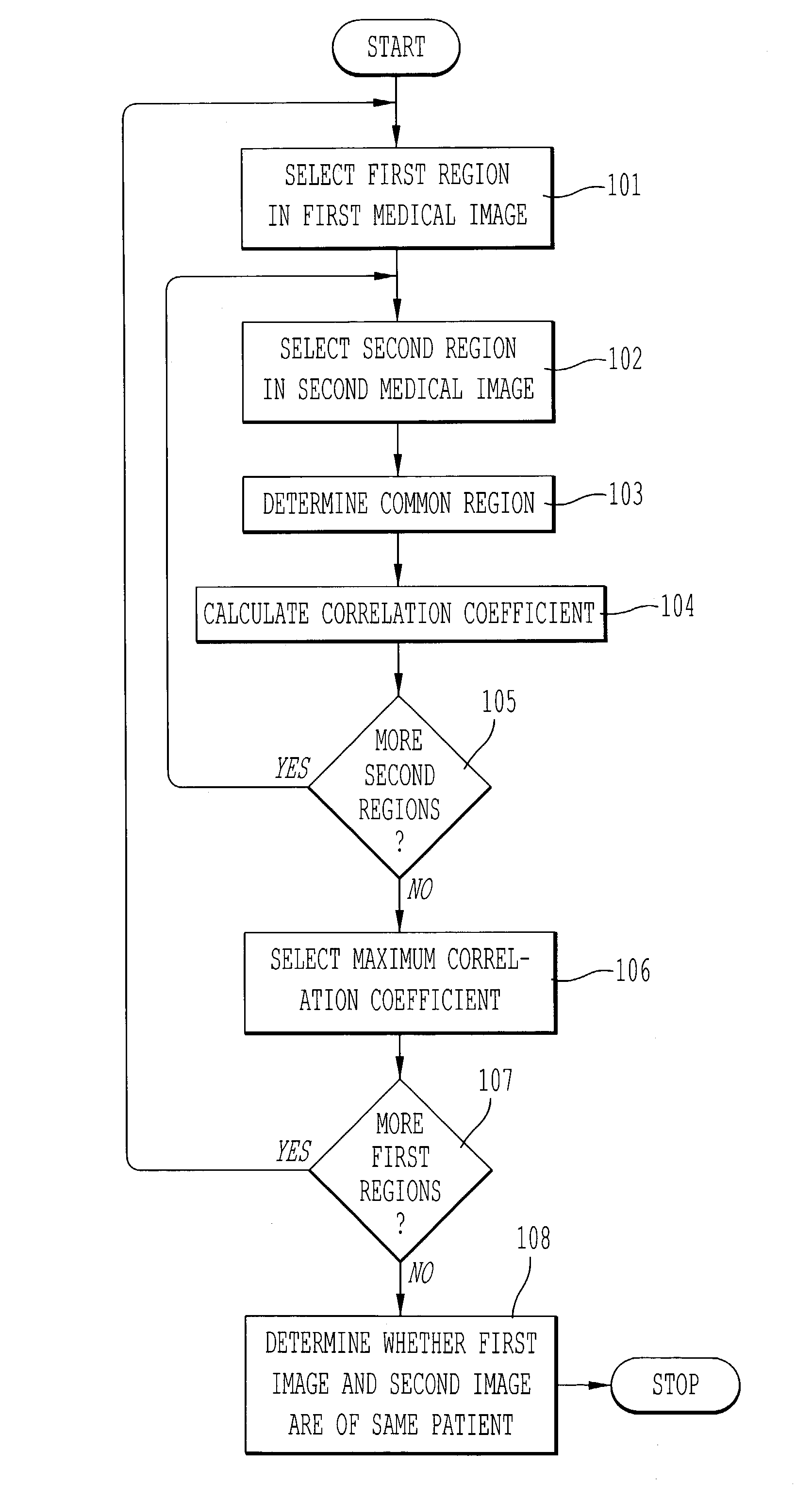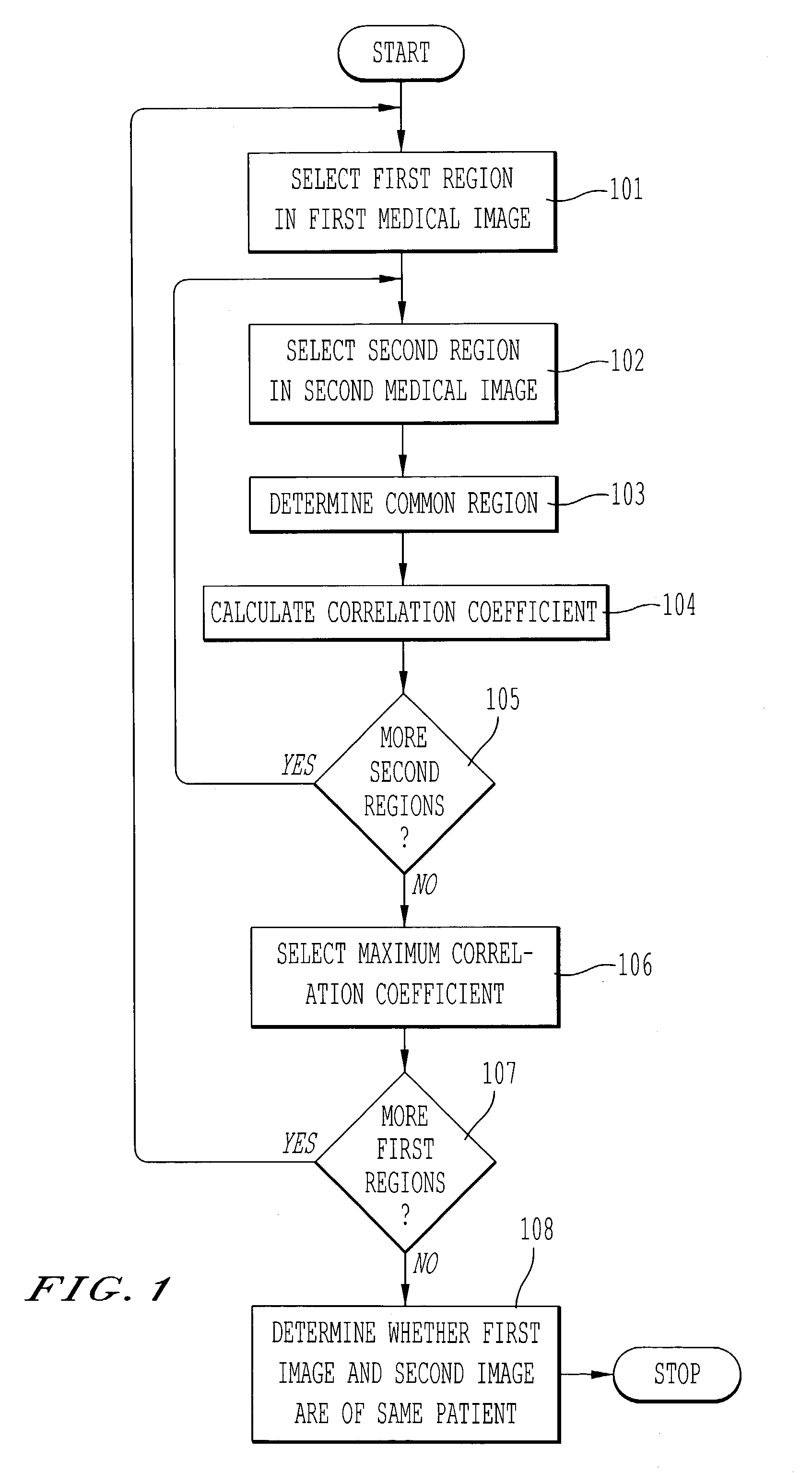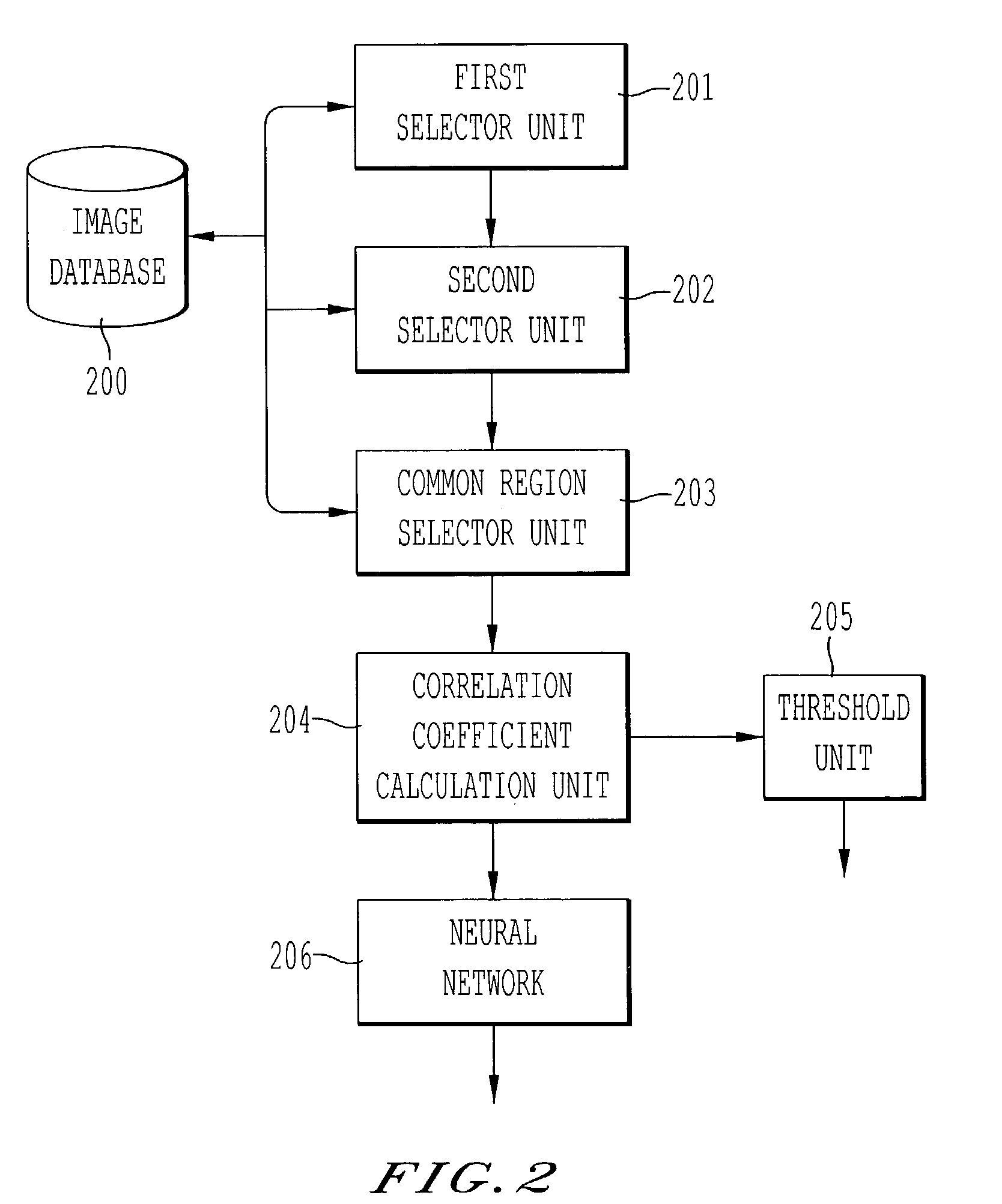Automated method of patient recognition using chest radiographs
a chest radiograph and automatic method technology, applied in image enhancement, instruments, healthcare informatics, etc., can solve the problems of difficult to find such filing errors, difficult to re-file images in the correct location of the pacs server, and inability to recognize patients
- Summary
- Abstract
- Description
- Claims
- Application Information
AI Technical Summary
Benefits of technology
Problems solved by technology
Method used
Image
Examples
Embodiment Construction
[0034]Referring now to the drawings, wherein like reference numerals designate identical or corresponding parts throughout the several views, FIG. 1 is a flowchart of a method for determining whether a first medical image and a second medical image are medical images of the same patient. In step 101, a first region is selected in the first medical image. The first region corresponds, for example, to one of a thoracic field, a cardiac shadow, a lung apex, a superior mediastinum, and a right lower lung in the first medical image. In step 102, a second region is selected within a search region of the second medical image. The search region is based on the first region selected in the first medical image. In step 103, a region common to the first region and the second region is determined based on a boundary of the first region and a boundary of the second region. Next, in step 104, a correlation coefficient is calculated based on image data from the first medical image in the common re...
PUM
 Login to View More
Login to View More Abstract
Description
Claims
Application Information
 Login to View More
Login to View More - R&D
- Intellectual Property
- Life Sciences
- Materials
- Tech Scout
- Unparalleled Data Quality
- Higher Quality Content
- 60% Fewer Hallucinations
Browse by: Latest US Patents, China's latest patents, Technical Efficacy Thesaurus, Application Domain, Technology Topic, Popular Technical Reports.
© 2025 PatSnap. All rights reserved.Legal|Privacy policy|Modern Slavery Act Transparency Statement|Sitemap|About US| Contact US: help@patsnap.com



